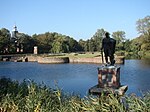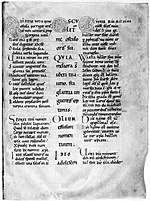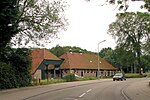J.C.J. van Speijk Lighthouse

The J.C.J. van Speijk Lighthouse is a lighthouse on the North Sea coast near Egmond aan Zee, in the municipality of Bergen, North Holland, in the Netherlands. The foundation of the lighthouse, shaped like a tomb, is the official Dutch memorial to Jan van Speyk, a hero to the Dutch people.The treacherous sea near Egmond necessitated the construction of two lighthouses, which were built in 1833. The northside of the light is red to warn for dangerous shallows near the coast north of Egmond. As soon as a ship leaves the danger zone it sees the white light. The south tower, on the Torensduin, was deactivated in 1891 and demolished in 1915. The north tower is still there, and is declared a Rijksmonument.
Excerpt from the Wikipedia article J.C.J. van Speijk Lighthouse (License: CC BY-SA 3.0, Authors, Images).J.C.J. van Speijk Lighthouse
Vuurtorenplein, Bergen
Geographical coordinates (GPS) Address Nearby Places Show on map
Geographical coordinates (GPS)
| Latitude | Longitude |
|---|---|
| N 52.619055555556 ° | E 4.6216666666667 ° |
Address
Vuurtorenplein
1931 CV Bergen
North Holland, Netherlands
Open on Google Maps









